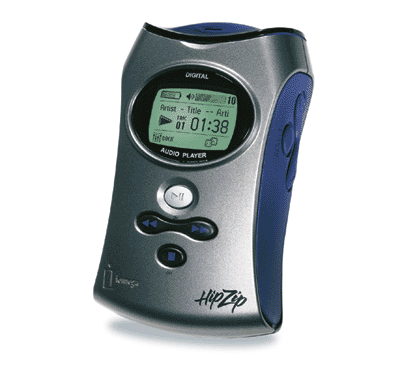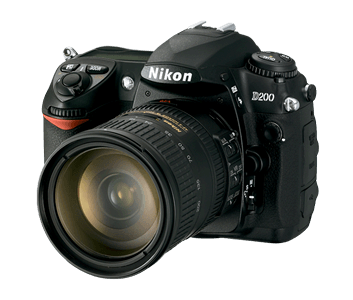 |
| 40 Megs of storage, baby! |
Fast forward to the fall of 2004, and my girlfriend (who would later become my wife) and I wanted to get a digital camera of our own. We took a great deal of trips to see our respective families, who were often out of town, and wanted a way to chronicle our visits in some way that could be easily shared. And even though digital cameras were gaining in popularity by then (cameras on phones were not quite a novelty yet, but not entirely uncommon either) I still thought they were somewhat magical. The one we picked out was a Canon Powershot SD100 Digital ELPH, which rendered images in a gigantic 3.2 megapixel canvas. It even took videos, which I could edit in iMovie to create masterworks like this cheesy music video about my cousin's cat.
All this time I knew nothing of focal lengths, apertures, f-stops, ISO, or any of the other elements that are so critical to photography. All I knew was that if I wanted to take more pictures on a memory card I could bump the JPEG compression down a notch to "Medium" from "Fine". And that was good enough, really, because essentially cameras like this were doing what they were designed to do: democratize the photographic process by allowing virtually anyone to take snapshots and share them electronically. And that little camera served us well for several years until the screen started to get all fuzzy due to some kind of microchip malfunction, and sometime in the fall of 2006 all the pictures it took were nothing but black and grey scratches.
So once again we upgraded, this time to a Canon Powershot SD1000 Digital ELPH, which if I understand Canon's naming conventions, was roughly nine-hundred better than our original camera. But aside from jamming more pixels onto the CCD image sensor, this one was merely a smaller, lighter, more usable version of the other camera. It was a great little device to have, that's for sure, and we took thousands of photos on it over the next several years. We liked its small size and ability to take good photos, especially outdoors, and most of the photos that now line the walls of our house were taken with that little guy.
But then, as the wheels of time rolled ever onward, it became necessary for yet another upgrade. Though to be fair, the desire for a new camera was not brought on by sheer techno-lust for the Next Coolest Thing, but by the need to have two cameras in order to photograph documents for a research project. One would simply not suffice. So after much research, and a recommendation from one of my favorite tech journalists Andy Ihnatko, we dropped about $250 for a Panasonic ZS7--surely the last digital camera we would ever purchase! With a wide-angle lens, 720p movie recording capability, plenty of manual controls, and a built-in GPS, there simply would not be any reason for another camera...right? And in the year and a half since we bought it, the little guy has served us remarkably well. It's a rugged, durable piece of digital wizardry that takes amazing outdoor photos and crisp HD video. And on a trip to DC, the ZS7's crazy zoom lens made the Washington Monument feel like it was right next to us while we stood by the Capitol building at the other end of the Mall.
 |
| Panasonic Lumix ZS7: Buttons, buttons, everywhere... |
And so about one month back we started thinking about purchasing a digital SLR camera. Neither of us have really used digital SLR cameras, but when my dad or my brother Andy used their SLRs to take pictures of us or our son we were always impressed with how they looked. The light was so natural. The pictures were so realistic. There was often no grain or pixellation in their photos, and at the risk of sounding like a photo snob, I really liked how much better these pictures turned out compared to our trusty little ZS7 or SD1000 (which, incidentally, was lost on a trip to Minnesota last October. *snif*). We weren't sure we were ready to take the leap though, so I asked a coworker who also happens to be a professional photographer if he could come by and show us his Nikon D200 for the afternoon.
And wow, did that ever open up the floodgates.
With just a couple snapshots of our son in the living room, we were hooked. That camera was able to bring out so much detail in his face, and so much clarity in his steel-blue eyes, while showing nearly every wisp of hair on his 10-month-old head that I could hardly believe my coworker was not charging us hundreds of dollars for what surely must be a full-fledged portrait session. But no, these were just regular pictures that the three of us were taking with a much nicer camera than I had ever used before. It was stunning.
Turns out the secret sauce for getting such good photographs wasn't so much the camera as it was the lens: a Nikon 50mm f/1.8G (numbers and letters that, a few weeks ago, were entirely meaningless to me), to be specific. This 50mm lens my coworker brought over, as I have recently learned, is one of the tried-and-true tools of the photographic trade, and perfectly suited for the kinds of photos my wife and I have been wanting to take of our son. We knew right away that we wanted to buy one of these fancy-pants digital SLR cameras and turn our photo-taking up to 11.
But which one to get? That's the real trick, isn't it. And one which we really wanted to get right. After much research we settled on a Nikon D5100, which seemed to get everything right: a great image sensor, lots of manual controls like our ZS7, a big ol' LCD screen on the back that swiveled out, 1080p movie-recording capabilities...you name it, this camera has is. It is generally well-reviewed at various online outlets too, which is always a good thing. And then we went to Best Buy where I got to pick one up and hold it. Ouch. It felt like it was made of cheap plastic, and I got the feeling that the swivel-out LCD screen would break right off if I looked it funny. I was not impressed, no matter how many megapixels it had or how good its built-in flash was.
 | |
| Nikon D200: An oldie but a goodie. |
And so we bought one from Adorama Camera, which also sold us a two-year warranty for about $50. Normally I don't go for these warranties, but on used equipment it seemed like a good idea. And instead of the standard "kit" lens, we bought the 50mm 1.8G that my coworker showed us. In the roughly four weeks since we have purchased the camera, it seems as a whole new world of photo-taking has opened up that was, previously, hidden right before our eyes. I know this probably sounds a tad cliche, and possibly a bit snobbish, but I really had no idea what a camera could do until we started playing around with this D200 and accompanying 50mm lens.
I would like to post some examples to show what I mean when I say it takes so much better photos, and I probably will in the coming days and weeks, but if I had to sum up everything that makes this camera better than any of our previous point-and-shoot models in a couple bullet points it would be:
- Incredibly detailed photos, with very little grain or noise.
- We hardly ever need to use the flash, which makes photos look much more natural and pleasing.
- Bokeh. This is the effect that happens when the thing you want to stand out in the picture is sharp, but the background and foreground is kind of blurry. Here's a photo I took last weekend that illustrates this concept:
 |
| (click for full-size version) |
Beyond that there's a whole bunch of other reasons we like this camera, but this blog post is getting pretty long and I think I need to wrap things up. Suffice to say, the D200 has been an amazing improvement for us and we are excited to explore more about photography as we continue to learn more about the camera and how to use it.















